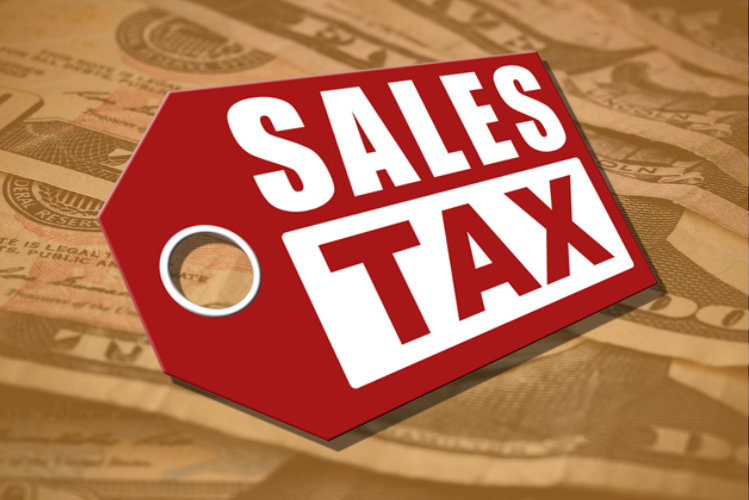Supply chain:
One of the 5 Essential Tips to Master Sales Tax with Confidence is to to understand the supply chain. Whenever a general consumer buys something from the market, it reaches him after passing through several stages. The manufacturer produces the product and ships it to the distributor. From the distributor, the goods are further forwarded to the wholesaler and then to the retailer. Finally, the general public buys from the retailer. This entire process is called the supply chain. GST is levied at every stage of the supply chain. Wherever value is added, sales tax will be levied; hence, it is also called value-added tax.
Example:
ABC Private Limited is a manufacturer. It sells a product worth Rs. 100,000 to “B Limited” (a distributor) with an 18% GST, i.e., Rs. 18,000. B Limited sells the product to “C Private Limited” (a seller) for Rs. 236,000, which includes Rs. 36,000 as GST. C Limited then sells it to a general consumer (Mr. A) for Rs. 354,000, including Rs. 54,000 in GST.
The Second of the 5 Essential Tips to Master Sales Tax with Confidence:
Who will pay sales taxes?
The manufacturer collects Rs. 18,000 from B Limited and deposits it with the government. B Limited collects Rs. 36,000 from C Limited and deposits it as well. Similarly, C Limited collects Rs. 54,000 from Mr. A and deposits it with the government. Thus, the manufacturer, distributor, and wholesaler did not pay any money from their own pockets, but only acted as agents to collect the levy and remit it to the government. VAT is indirectly paid by the end consumer. An end consumer is the person who ultimately uses the product or service. For example, a smartphone manufactured by Samsung and purchased by an individual from a mobile shop in Islamabad is considered to be the end consumer.
Why Sales Tax Is an Indirect Tax?
The Third of 5 Essential Tips to Master Sales Tax with Confidence is that VAT is called an indirect tax because the levy is ultimately paid by the general consumer, but indirectly. The reason is that there is a large number of general consumers and they cannot collect or deposit the levy themselves. For instance, you cannot expect a common who brought a cold drink of RS. 100 from a small shop and then deposit the fee of Rs. 18 in a bank. Therefore, the seller is made responsible for collecting the levy and depositing it with the government.
Input and output tax:
The fourth of 5 Essential Tips to Master Sales Tax with Confidence: Input tax is the amount that the buyer pays to the seller when buying goods, while output tax is the tax that the seller imposes on the buyer. The output is normally higher than the input, and if the input is more than the output, then the excess amount is refundable.
Example:
B Limited charges Rs. 36,000 in GST to C Limited. However, B Limited’s input credits (paid to A Limited) is Rs. 18,000. Therefore:
- Output = Rs. 36,000
- Input = Rs. 18,000
- GST Payable = Output – Input = Rs. 36,000 – 18,000 = Rs. 18,000
Returns Filing Deadlines (Monthly):
- Annexure C for the sales of the current month must be submitted on the 10th day of the following month.
- The due amount must be paid before or on the 15th day of the month.
- The GST return must finally be submitted on 18th day of month.
For example: Sales for the month of June 2025 must be reported on or before 10th July 2025, the due amount must be deposited in the government treasury on 15th July 2025, and the sales tax return must be filed on or before 18th July 2025 and If the not submitted by the due date, a penalty may be imposed.
Adjustment of Input Tax:
The fifth of 5 Essential Tips to Master Sales Tax with Confidence: the general consumer (end user) cannot claim input VAT. Only registered STRN holders can claim input credits. Without STRN registration, input VAT is not allowed and cannot be claimed. As per the Sales Tax Act,1990 Sales Tax Act, 1990, only 90% of the paid amount is eligible for adjustment. However, the remaining 10 percent is still mandatory to be deposited.
Example:
If B Private LTD. input credit is Rs. 18,000, only Rs. 16,200 (90%) can be claimed. The remaining Rs. 1,800 must still be deposited.
Important Reminder:
Once a person registers for STRN, he is required to file a sales tax return every month. Sometimes people register for GST for a specific purpose, but do not know that monthly filing is mandatory even if no business activity. If not filed on time, a penalty may be imposed. we have explained 5 Essential Tips to Master Sales Tax with Confidence If you need any further information regarding this matter, please get in touch with us through our website by filling out the Contact Us form, or reach out via our social media accounts.



